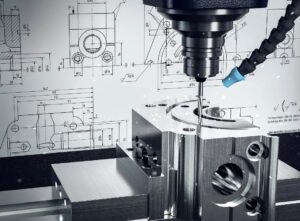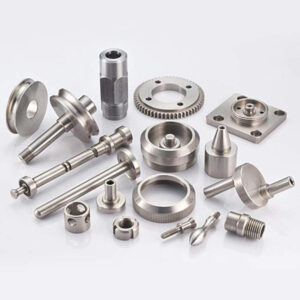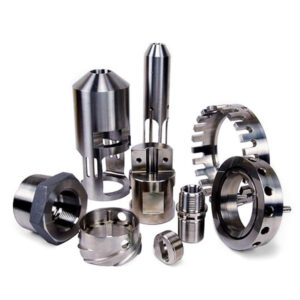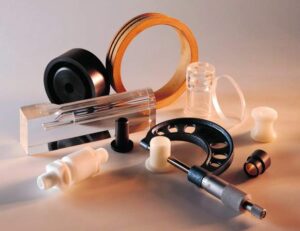
How CNC machining works
CNC machines come in many different models and configurations, but they all have essentially the same mode of operation: specialized software is used to convert a 3D model into a set of instructions for the CNC machine to follow to create the final part. These instructions are written in a computer language called G-code. Once the machine is running, the process does not require any human intervention other than loading material, unloading final parts, reorienting or securing workpieces, and allowing the machine to reach previously inaccessible areas.
CNC machining process
- Product design and formulation of CNC processing technology
Before CNC machining, it is first necessary to design the product and formulate the CNC machining process. Designers use CAD software to design products based on their requirements and functions. Then, the process engineer formulates the processing technology based on the product’s shape, material and processing requirements, including selecting appropriate cutting tools, cutting parameters, cutting paths, etc.
- Write CNC machining program
The machining program is the core of CNC machining. It contains information such as machine tool movement instructions, cutting parameters, and cutting paths. Writing processing programs requires the use of CAM software to convert product design files into processing programs. When writing processing programs, factors such as the cutting performance of the material and the rationality of the process need to be considered to ensure the efficiency and quality of the processing process.
- Carry out machine tool clamping and tool clamping
Before CNC machining, you must first set up the required fixture and select the appropriate tool for cutting. Machine tool clamping is the process of fixing the workpiece on the machine tool. It needs to consider the shape, size and processing requirements of the workpiece. Tool clamping is the process of installing the tool on the machine tool. It requires selecting the appropriate tool type and specification, as well as the correct installation method. The accuracy and stability of machine tool clamping and tool clamping have an important impact on machining accuracy and efficiency, so they need to be adjusted and inspected carefully.
- Carry out processing operations
After the machine tool clamping and tool clamping are completed, CNC machining operations can begin. The operator inputs the written processing program into the CNC machine tool controller, and then through the controller’s instructions, the machine tool cuts according to the path and speed specified by the program. During the processing process, the operator needs to monitor the processing status and adjust cutting parameters and tools in a timely manner to ensure processing quality and efficiency.
- Carry out processing inspection and trimming
After completing CNC machining, the machined parts need to be inspected and trimmed. Inspection can use measuring tools and equipment to detect size, shape and surface roughness to verify whether the processed parts meet the requirements. Trimming is the process of trimming, grinding or polishing the workpiece to eliminate possible processing defects and improve the accuracy and surface quality of the workpiece.
Summary: The CNC machining process covers the design and formulation of machining technology, writing of machining programs, machine tool clamping and tool clamping, machining operations, machining inspection and trimming, etc. Each link requires accurate operation and strict control to ensure the efficiency of the processing process and the quality of the processed parts.


CNC processing application industries
CNC machining is widely used in various industries, such as food, aerospace, automotive, electronics, medical equipment, mold manufacturing, woodworking, lettering and engraving systems, electrical, etc.
- Food and Beverage Industry: The FMCG industry uses a variety of customized material handling machinery with CNC machined parts. Food packaging is also made of injection molded plastic, with molds CNC machined.
- In the automotive industry, CNC processing can manufacture automotive engine parts, chassis parts, body parts, etc. Through CNC machining, high precision and consistency of parts can be achieved, improving the performance and safety of automobiles.
- In the electronics field, CNC processing can manufacture electronic parts, circuit boards, casings, etc. Machining component mounting holes on printed circuit boards and machining aluminum or copper heat sinks for heat-generating electrical components are common applications in the electronics industry using CNC machining. Due to the high efficiency and flexibility of CNC processing, it can meet the rapid development and production needs of electronic products.
- In the field of medical equipment, CNC machine tools can be used to produce precision equipment for pharmaceuticals. Applications include extremely precise metering pumps, ingredient distribution nozzles, and packaging. CNC machining can manufacture medical device parts, artificial joints, dental equipment, etc. The high precision and repeatability of CNC machining can ensure the quality and safety of medical equipment.
- In the field of mold manufacturing, CNC processing can manufacture various types of molds, such as injection molds, die-casting molds, stamping molds, etc. Due to the versatility of CNC machining, high-precision machining of complex molds can be achieved.
- In the aerospace field, CNC machining can manufacture complex-shaped aerospace parts, such as turbine blades, engine parts, aerospace structural parts, etc. Due to the high precision and repeatability of CNC machining, the quality and performance requirements of parts can be ensured.
CNC machining is an efficient, precise, flexible and reliable part manufacturing solution. With the continuous development of technology, CNC machining will play an increasingly important role in various industries and promote the progress and development of the manufacturing industry. AIXI provides common CNC machining services including CNC turning, milling, cutting, engraving and grinding. Whether it is design or manufacturing, please contact us if you need it.

 Deutsch
Deutsch Français
Français 日本語
日本語 Español
Español
